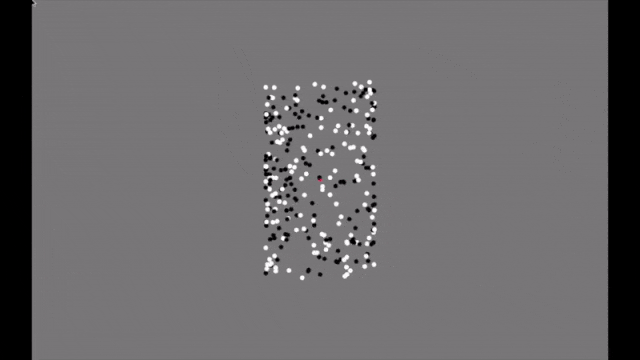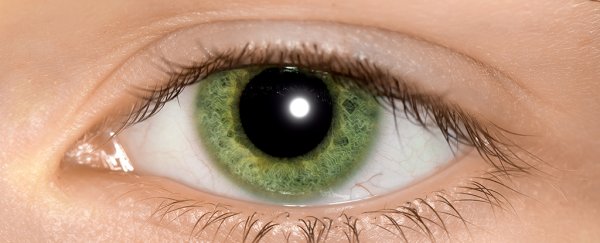Accurately arriving at a diagnosis for autism spectrum disorder can be challenging, especially in cases that appear to be borderline.
By noting the way a person's pupils dilate as they watch a column of shifting dots, specialists might soon have one more clue to help them determine which way someone's brain is wired.
The discovery comes from a team of researchers based at the University of Pisa in Italy, who found a simple optical illusion could be used to objectively detect how some individuals tend to zoom in on details and miss the bigger picture.
Autism Spectrum Disorder (ASD) covers a range of traits, all of which can range from mild to severe in effect.
These typically include difficulties in fine motor control and processing sensory information, leading to behaviours such as avoidance of overstimulation or repetitive movements.
Communicating and responding to social cues can also be a challenge, giving rise to anything from difficulties with pragmatic language skills to being completely non-verbal.
With so many boxes to tick and such variety in how it presents – not to mention the fact it typically only becomes recognisable a few years after birth – ASD can easily be missed.
Having another tool that draws a clear distinction could help ASD specialists make the call on a diagnosis.
This method uses two layers of contrasting dots that move in opposite directions inside a narrow column.
Take a look at it below, and ask yourself – is the column rotating, or are they just two sheets of dots sliding across each other?
 (Turi et al./eLife)
(Turi et al./eLife)
Don't worry if you see it switch back and forth. Our brain often wavers in its attempts to settle on the meaning of a picture, just as it does with 3D 'necker cubes' and the famous 'duck versus rabbit' drawings.
The difference between the two translations of the dot column illusion depends on how we interpret the two layers.
If you see them as separate moving sheets, you're focussing on one shade and then the other, picking each out as distinct details of unconnected scenes - a very detail-oriented view.
But when the brain zooms into the bigger picture and recognises the illusion as a single system, one shade (most likely white) is seen as the front of a dot moving across the face of a column before flipping over at the edge and appearing as the other shade (black) on the inner surface.
Some of us fixate more on one than the other. But people whose brains reflect the traits more associated with ASD should be more detail-focussed, a signature of the sensory processing wiring that emerges from autism.
The researchers ran the illusion past 50 adults who didn't have an ASD diagnosis.
Rather than ask the volunteers what they saw, the researchers used a neat feedback trick involving their eyes. If their focus was on the layers as separate details, their pupils would flicker as they adjusted to the two different shades of light.
They then tested the volunteers for autism-associated traits using a self-reported questionnaire.
While the analysis wasn't intended to diagnose the subjects, it did allow them to correlate their findings with measures used to predict ASD.
Sure enough, those individuals who ranked higher on the survey tended to show pupil fluctuations that suggested they were focussing more on the illusion's details than the picture of a rotating column.
It's not unusual to employ illusions in order to check what the brain is up to. The famous hollow mask optical illusion has been explored as a way to test for schizophrenia, for example.
There's more work to be done before such a test will become common place among the other diagnostic practices, especially given the nature of self-reporting on a relatively small sample size.
But given autism often makes it hard for people to communicate – especially among young children – a simple measure of a flickering pupil just might be the thing that helps them get the assistance they need.
This research was published in eLife.
A version of this article was originally published in March 2018.
